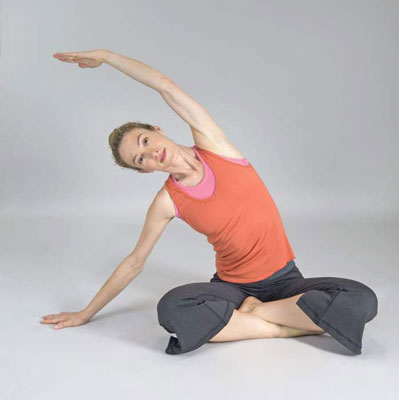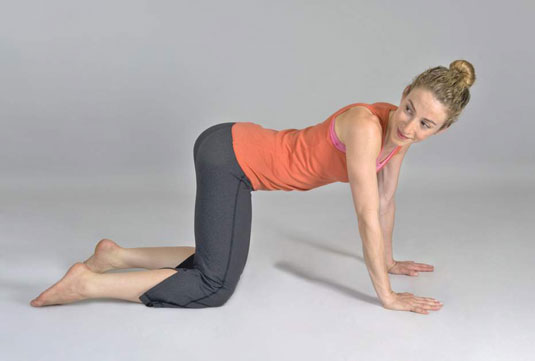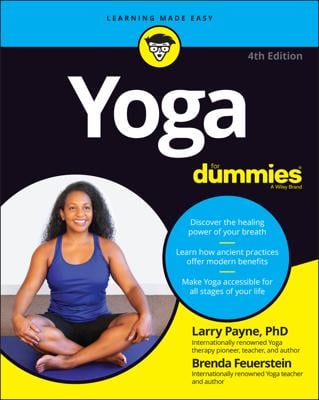The spinal column can move in four basic ways: forward (flexion), backward (extension), sideways (lateral flexion), and twist (rotation). The Yoga side bend is often the least practiced. This missed opportunity is unfortunate because side bends help to stretch and tone the muscles along the sides of the abdomen, rib cage, and spine, keeping your waist trim, your breathing full, and your spine supple.
A true side bend fully contracts one side of the body while expanding the other. To experience the effects of a side bend right now, simply lean over to your right (or left) side as you exhale and reach the same-side arm downward. To realize the full effect of the stretch, reach the opposite-side arm up toward the ceiling.
Seated side bend
This seated side bend is a great way to ease into the position if you’re not used to bending from side to side. Just follow these steps:
Sit comfortably in a simple cross-legged position.
Place your right palm on the floor, near your right hip.
As you inhale, raise your left arm out to the side and up above your head beside your left ear.
As you exhale, slide your right hand across the floor out to the right, letting your torso, head, and left arm follow as you bend to the right.
Don’t let your buttocks come off the floor as you bend.

As you inhale, return to the upright position (as you were at the start of Step 2).
Repeat Steps 2 through 4 three times and then stay in the bent position (Step 3) for 6 to 8 breaths.
Repeat Steps 1 through 5 on the other side.
All-fours side bend
Many people with back or hip problems have a hard time sitting upright on the floor. The all-fours position gives the spine more freedom and is an easier side bend from the floor. Follow these steps to enjoy the benefits:
Start on your hands and knees, with your knees below your hips and your hands below your shoulders with your palms on the floor.
Straighten your elbows, but don’t lock them. Look straight ahead.
As you exhale, bend your head and torso sideways to the right and look toward your tailbone.
As you inhale, return to the starting position in Step 1.
Repeat Steps 2 and 3 three times and then stay in Step 2 for 6 to 8 breaths.
Repeat Steps 2 through 4 on the other side.

Folded side bend
The Sanskrit word bala (pronounced bah-lah) means “child.” This practice was inspired by a baby’s folded position in the womb. The benefits of this side bend, which is a variation of balasana, the child’s posture, are the same as for the seated side bend.
The following steps show you how it works:
Sit on your heels with your toes pointing back and fold forward by laying your abdomen on your thighs and your head on the floor.
Extend your arms forward with your palms on the floor.

As you exhale, stay in the folded position and slide your upper torso, head, arms, and hands to the right as far as possible.
Wait for a few seconds and again, with another exhalation, slide farther to the right if you can do so without straining.
Return to center and repeat the sequence to the left side, staying in Step 2 for 6 to 8 breaths on each side.

